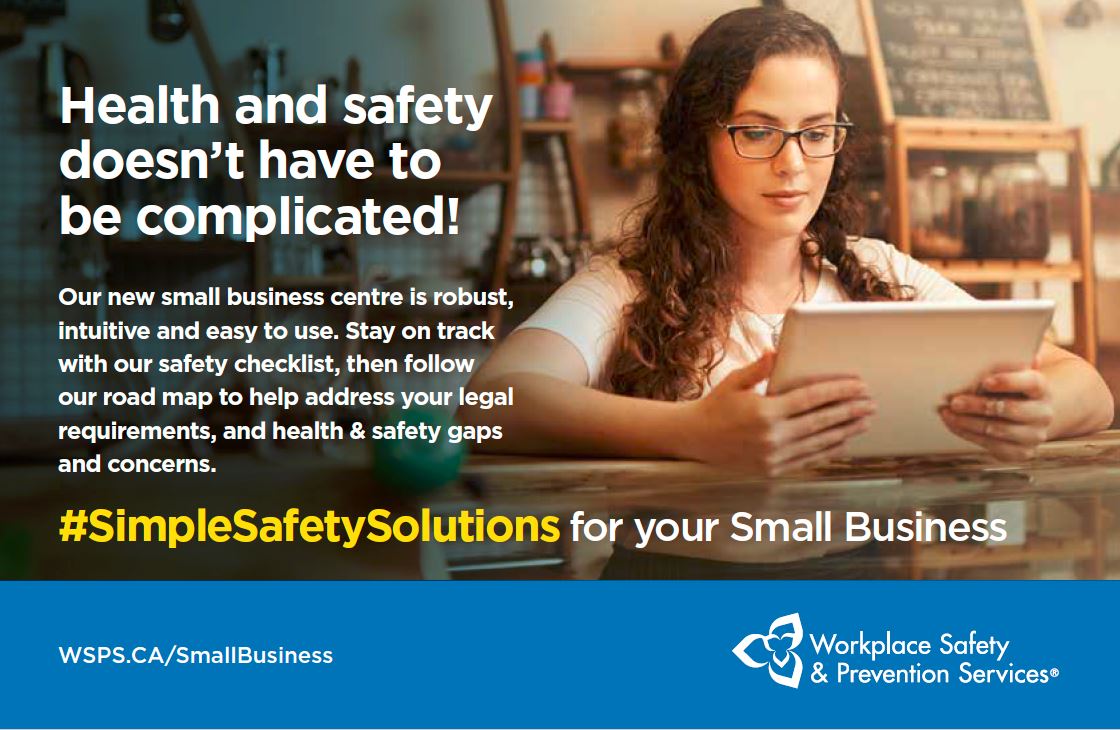Stop slips, trips and falls with these expert tips
If you slip or trip over something at work, you may immediately look around to see if anyone saw the fumble. “When we think of slips and trips, our first thought is often about the risk of embarrassment, rather than the risk of injury,” says Sara Lambie, a Health and Safety Consultant with WSPS. Sara explains that falling a short distance off a step ladder or tripping over material piled in a pathway can do much more than bruise your ego. “It really depends on how you land and what you fall into that can significantly impact the outcome,” she says.
It’s true that falls from heights, such as a fall from a roof or a high-rise building, are more likely to lead to a fatality. However, a quick slip on a concrete surface or tripping over a power cord can still have a life-altering result. In fact, according to WSIB claims from 2021 to 2022 among the sectors that WSPS serves, falls on the same level (i.e., slips and trips) are causing injuries more frequently than falls from heights. “These types of falls are often caused by tripping over electrical cords, tools or equipment, or skids—all housekeeping hazards that can be controlled,” says Sara. “Slipping on wet floors, along with snow and ice in parking lots are also common causes of falls on the same level.”
According to WSIB data, falls from short distances—one to three metres—are also occurring quite frequently. “These are often falls off step stools or from standing on an unapproved item, such as a chair or box,” says Sara. “Getting in and out of a forklift or truck is another situation that can cause injuries,” says Sara. “You see workers dismounting by quickly jumping down to the ground rather than maintaining proper three-point contact, which isn’t good.” When these types of seemingly simple actions are not completed with deliberate care, people can get hurt. The WSIB injury claims are proof of that.
Establish prescriptive procedures
One of the top recommendations that Sara has for employers to help them control fall hazards is to establish precise, prescriptive procedures. “For example, it may not be enough to have a policy that states work areas must be kept clear of material and debris. In the case of by product from a manufacturing process, the employer may outline a schedule that clearly states how frequently the area must be cleaned, who is responsible for cleaning it, and where to dispose of the material” says Sara. When your employees have clear instructions and know exactly what is expected, they are more likely to follow the procedure. Another example Sara uses is salting and clearing the parking lot of snow and ice. If you want to ensure that it gets done, develop a procedure that states who will do it, when they will do it, the specific areas to be cleared, which tools to use, and where to find them. A sign-off sheet to document who cleared the parking lot and when it was done helps with accountability. After a while, the procedure will become automatic for workers.
More tips for employers
Sara gives the following advice to control fall hazards in your workplace.
Provide employees with ladder training. If ladders are used at your workplace, make sure you provide training that covers their differences (i.e., extension ladders vs. step ladders), so that everyone understands which type of ladder to use for which tasks. Use #1 Construction Grade ladders because of the capacity limits on other types of ladders. Discuss how to safely set up a ladder and how to inspect it. Enforce three-point contact, so that tools and materials are not being carried up or down the ladder. Instead, use a tool belt. Remind your workers to keep their belly button in between the side rails (i.e., do not lean far to one side).
Be smart about storage. If the proper piece of equipment is not readily available, employees are less likely to use it. “If the perfect ladder for the job is two floors away on the other side of the building, the worker may be more likely to stand on a pallet or a chair than take the time to retrieve the ladder,” says Sara. Another thing to consider is that when employees don’t know where to put things, they are more likely to leave them out, which creates tripping hazards. Be clear about where specific items should be stored and make sure the storage area has ample room and is close to the work area.
Put the IRS to work. Your workplace’s internal responsibility system (IRS) is essential to everything related to health and safety. Slips, trips, and falls are no different. Employers must ensure the work environment is safe by establishing policies and prescriptive procedures, as described earlier. Supervisors need to communicate these procedures through training and then enforce them. “As a worker, if I know that my supervisor isn’t going to do anything when I stand on a box instead of a step stool or when I don’t use three points of contact, then I’m more likely to take the easier, faster route,” Sara points out. If the procedures are not enforced in practice, the risk will still be there. Lastly, employees must participate in training, follow procedures, and report hazards when they see them.
How WSPS can help
Consulting
Training
- Preventing Slips, Trips, and Falls (eCourse, 1 hour)
- Ladder Safety Training (eCourse, 1 hour)
- Working at Heights (eCourse, 1 hour)
Resources
- Safety Check: Step Ladder Safety
- Slips, Trips, and Falls (article)
- Ladder Safety (guideline)



%202023.png)


